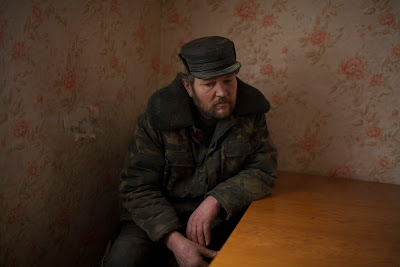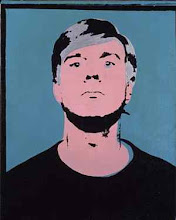 |
| Baltic, featuring banner of work by George Shaw on the occasion of his exhibition, The Sly and Unseen Day, 18 Feb - 15 May, 2011 |
The 2011 Turner Prize exhibition has opened at Baltic in Gateshead. The exhibition will continue until 8 January, and the winner will be announced on 5 December.
The shortlisted artists are: George Shaw, Karla Black, Hilary Lloyd and Martin Boyce. Examples of their work appear below, together with brief descriptions of the work (quoted from the Baltic website) and selected links. Read reviews of the exhibition by Adrian Searle, Tim Adams and Richard Dorment; see short videos on all the artists, here, and video commentary on the exhibition by Adrian Searle.
George Shaw.
 |
| George Shaw, Shut Up, 2011 |
 |
| George Shaw, The Resurface, 2010 |
 |
| George Shaw, Poet Day, 2005-6 |
 |
| George Shaw, Landscape with Dogshit Bin, 2010 |
 |
| George Shaw, The Time Machine, 2010 |
George Shaw was born in Coventry in 1966. He gained a BA from Sheffield Polytechnic in 1992 and an MA from the Royal College of Art, London, in 1998.
George Shaw paints the landscape of his adolescent life. His scenes are all taken from within a half-mile radius of his childhood home on the Tile Hill estate, Coventry. Typical of post-war British social housing, the estate could belong to any city or have originated at any point between the early 1950s and the late 1970s, promoting the timeless, placeless quality of Shaw’s work. His paintings are always devoid of the human figure, populated instead by seemingly arbitrary details of suburban infrastructure that he has recorded since the mid-1990s.
George Shaw (44) lives and works in North Devon.
Martin Boyce
 |
| Martin Boyce, A Library of Leaves |
 |
| Martin Boyce, Do Words Have Voices?, 2011 |
 |
| Martin Boyce, Do Words Have Voices? 2011 (detail) |
 |
Martin Boyce, Do Words Have Voices?, 2011
|
Martin Boyce was born in Hamilton, Scotland in 1967. He was awarded a BA in 1990 and an MA in 1997, both from Glasgow School of Art.
Martin Boyce engages with the historical legacy of Modernist forms and ideals to create deeply atmospheric installations drawing upon text and elements of design. His investigations will often re-stage the outside within the gallery space, evoking the urban landscape through precisely explored sculptural details. Steeped in an understanding of the concepts of Modernist design, his work draws upon its visual language with a complex repertoire of forms. Noted for his engagement with how these objects are produced, Boyce is interested in how their original political or aesthetic ethos changes over time. His meticulous sculptures bear out his imaginings for the alternative lives these objects might lead if created at a different moment.
Martin Boyce (43) lives and works in Glasgow.
See video made for Turner Prize exhibition.
Karla Black
 |
| Karla Black, Help is not Appealing, 2010 |
 |
| Karla Black, More of the Day, 2011 |
 |
| Karla Black, More of the Day, 2011 |
 |
| Karla Black, Doesn't Care in Words, 2011 |
 |
| Karla Black, At Fault, 2011 |
Karla Black was born in Alexandria, Scotland in 1972. She studied at the Glasgow School of Art where she received a BA in 1999, an MPhil in 2000 and an MA in 2004.
Karla Black brings together disparate and often unorthodox materials spreading, crumpling and layering them to make expansive floor-based works and suspended sculptures. Using both traditional art-making materials and those drawn from the everyday environment, she has incorporated powder-paint, plaster, crushed chalk, Vaseline, lipstick, topsoil, sugar paper, balsa wood, eye shadow, nail varnish and moisturiser. Her materials are rich in association but are chosen as much viscerally as they are psychologically. She selects things she "cannot help but use", starting each work through some unconscious desire.
Karla Black (38) lives and works in Glasgow.
See video made for Turner Prize exhibition and read profile on Saatchi Gallery website.
Hilary Lloyd
 |
| Hilary Lloyd, Moon, 2011 |
 |
| Hilary Lloyd, Shirt |
 |
| Hilary Lloyd, Man, 2010 |
Hilary Lloyd was born in Halifax 1964 and graduated from Newcastle upon Tyne Polytechnic in 1987.
Hilary Lloyd makes work which engages in various ways with the moving image, encompassing video projections, films on monitors, and slide projections. She foregrounds technical equipment as a sculptural medium, prominently displaying the AV equipment on which her work is installed.
Hilary Lloyd (46) lives and works in London.




























































